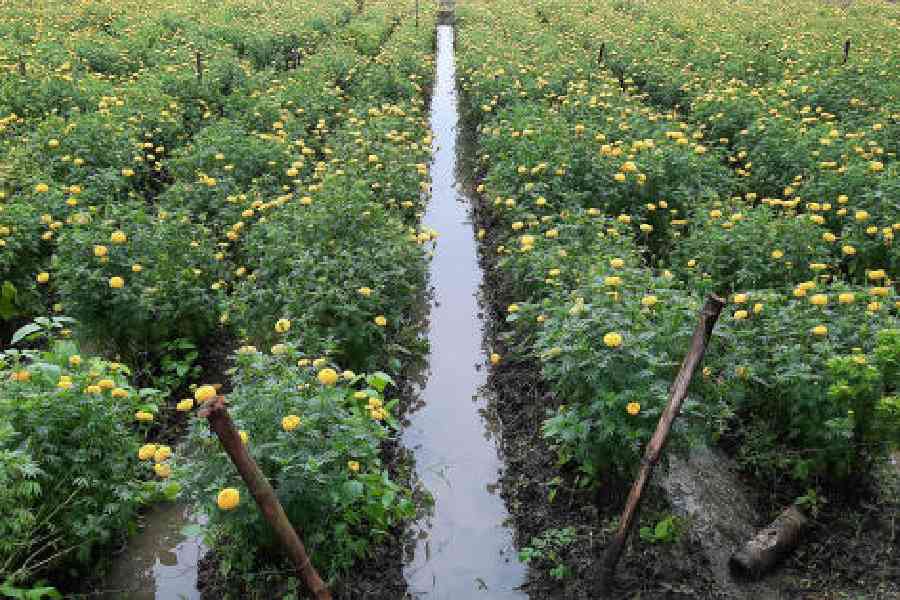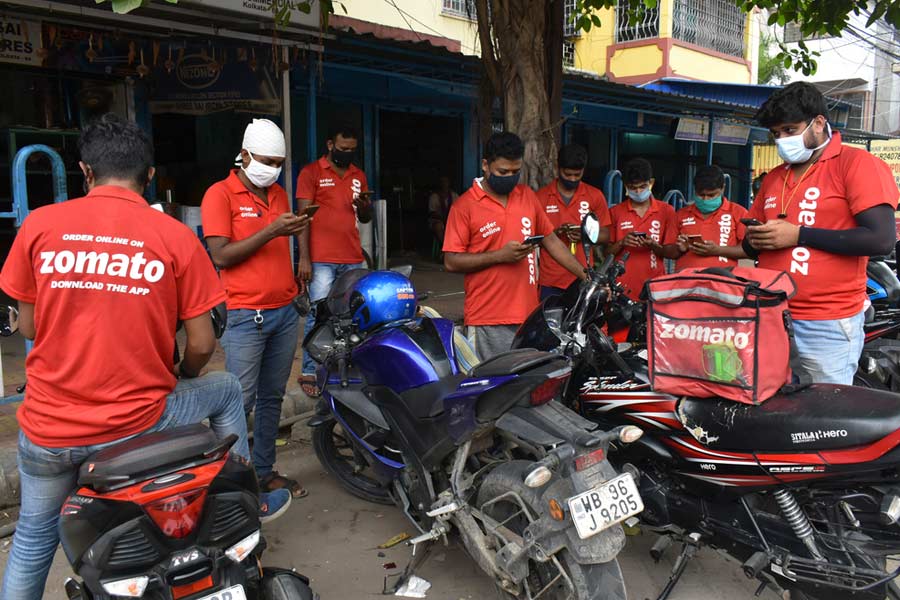Farmers, particularly those involved in horticulture, in large parts of south Bengal are worried as the Regional Meteorological Centre in Calcutta has forecast that relentless rainfall triggered by the formation of a low-pressure area over Gangetic West Bengal and adjoining regions is likely to persist for a few days.
“Light to moderate rainfall at most places with isolated heavy to very heavy showers is very likely to continue over West Bengal districts for the next seven days,” a communication from Met department stated.
The situation is expected to improve after a few days. An orange alert has been issued for districts such as South 24-Parganas, East Burdwan, Hooghly, Bankura, and West Midnapore, where heavy to very heavy rainfall is forecast during the next week.
The downpour that lashed south Bengal over the past 24 hours left its impact on agriculture while worsening the condition of urban roads in several parts of the state.
“The spell of rain began last weekend. There has been continuous rainfall during the past two days. If this trend continues for at least three more days, there is a possibility of serious damage to horticulture produce, especially ground crops. Since low-lying fields are likely to be waterlogged, the produce would be damaged and the roots of plants might rot too,” said Hrishikesh Khanra, deputy director of horticulture in Nadia district.
He added that vegetables like sweet pumpkin, pointed gourd and flowers growing directly on the ground were most vulnerable.
A farmer in Nadia echoed Khanra and said if the rain did not relent, his crops would be damaged. The farmer braved the rain to create drainage channels to flush out
excess water.
The state government has already issued instructions through district-level offices, advising farmers to create adequate drainage outlets to prevent waterlogging and inundation. They have also been told to use protective sheds for safeguarding saplings of seasonal vegetables like cauliflower and cabbage.
“There is a strong possibility of damage to cauliflower and cabbage saplings, which many farmers are currently growing. In the case of deep waterlogging, such saplings will be damaged. So we have communicated necessary instructions to the farmers,” Khanra said.
Sagar Das, a farmer, expressed dismay at the condition of his fields.
“The fields are already damaged because of the rain spell that started last week. Several of my produce have been damaged because of excess water accumulation. The impact will be felt in the market within a few days,” he said.
While a section of farmers might suffer, agricultural experts noted that the rainfall might prove beneficial for certain crops. “This rainfall will help jute, betel and paddy,” an expert said.
Apart from agriculture, the coastal belt has been experiencing rough and unseasonal weather for the past few days. Fishing activities have taken a severe hit because of choppy seas. The sea is likely to remain rough along the coasts of Bengal and Odisha for the next 24 hours because of the prevailing low-pressure system.
While fishermen have been prohibited from venturing out, those already at sea have been unable to cast nets despite fish being present in the waters.
With no safe conditions to anchor in the deep sea, trawlers have either been forced to stay close to the coast or returned to the shore, a representative of the Fishermen Welfare Association in Kakdwip said.
In urban areas of the districts, normal life was disrupted because of waterlogging.
Arindom Sarkar, a resident of Chandannagar in Hooghly, said roads in his locality needed repairs and the heavy rain further worsened the condition.
“Throughout the day, we could not step out of our homes as the clogged drains could not flush out water that had accumulated on the roads,” Sarkar said.
Similar complaints poured in from other parts of south Bengal also.
Several schools in the districts could not hold classes as the premises remained
waterlogged.
In its latest update, the IMD stated that the low-pressure area over Gangetic West Bengal and neighbouring areas remained active, accompanied by a cyclonic circulation extending up to 7.6km above mean sea level. This system is expected to move slowly west-northwestwards across Jharkhand and north Chhattisgarh over the next two days.
On Tuesday, the monsoon trough at mean sea level stretched from Bhatinda through Rohtak, Kanpur, Daltonganj, the centre of the low-pressure zone over Gangetic West Bengal, and extended southeastward into the northeast Bay of Bengal.
Weather office predicted that north Bengal would also experience heavy rainfall in the coming week. Showers are expected in Jalpaiguri, Kalimpong, and Alipurduar on Wednesday, while districts such as Jalpaiguri, Darjeeling, Kalimpong, and Alipurduar are likely to receive heavy rain again on Sunday and Monday. Thunderstorm activity is expected to continue throughout the week.
In Calcutta and parts of south Bengal, rain has continued without pause since Monday night. Northern districts saw very light to moderate rainfall. Till Tuesday afternoon, significant rainfall was recorded in Uluberia (11cm), Dum Dum (10cm), Amta (10cm), Basirhat (9cm), Kakdwip (8cm), and Canning (7cm).










